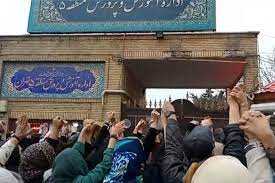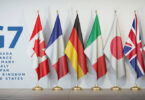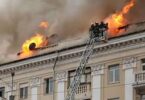DUBAI (AP): Iranian teachers held protests in several cities on Tuesday over suspected poisonings targeting hundreds of schoolgirls. Security forces broke up several of the demonstrations using water cannons and tear gas, activists said.
Meanwhile, prosecutors started filing criminal charges against journalists, activists and others over their comments on the still-unsolved incidents that began in November and escalated in recent days, with dozens of schools reporting suspected cases.
The alleged poisonings come as Iran has faced months of protests over the September death of Mahsa Amini after her arrest by the country’s morality police, one of the most-serious challenges to Iran’s theocracy since its 1979 Islamic Revolution. These new incidents threaten to again stoke public anger as parents fear for their children’s safety. It remains unclear who may be behind the suspected attacks and what chemicals — if any — have been used.
At least 127 schools have reported suspected poisoning cases so far, according to figures compiled by the Tehran-based reformist newspaper Etemad, with dozens reported on one recent day alone. Nearly every school reporting an incident has been a girls’ school.
Activists and Iranian media reports previously have said that over 1,000 students complained of falling ill with at least 400 of them hospitalized. Iranian authorities have offered no exact figures since the crisis began.
However, Mohammed Hassan Asefari, a prominent Iranian lawmaker who is on a panel investigating the incidents and has close ties to security forces, told the semiofficial ISNA news agency that as many as 5,000 students have complained of being sickened in 230 schools across 25 of Iran’s 31 provinces. No other official or media report has offered figures that high so far.
On Tuesday, online videos and photos purportedly showed teachers demonstrating in a number of Iranian cities, including Ahvaz, Isfahan, Karaj, Mashhad, Rasht, Sanandaj, Saqqez and Shiraz.
Others showed anti-riot police on streets, with some police officers surrounding those demonstrating in Isfahan. Activists identifying themselves as belonging to Iran’s Coordinating Council of Teachers Syndicates said police used pepper spray, water cannons and force to disperse protesters in Mashhad, Rasht and Saqqez.
Iranian state media made no mention of Tuesday’s demonstrations or of security forces dispersing demonstrators. Teachers have been targeted by security forces and faced arrests for months over protesting in support of their long-standing demands for salary increases amid the collapse of Iran’s currency, the rial.
Protesters and others have raised the possibility that religious extremists may be targeting schoolgirls to stop them from receiving educations. Attacks on women have happened in the past in Iran, most recently with a wave of acid attacks in 2014 around Isfahan, at the time believed to have been carried out by hard-liners targeting women for how they dressed. But even in the chaos surrounding the Islamic Revolution, no one targeted schoolgirls for attending classes.
Iran itself also has been calling on the Taliban in neighboring Afghanistan to have girls and women return to school.
Determining what’s going on in Iran has been difficult. Authorities have detained nearly 100 journalists since the start of the protests in September over the death of the 22-year-old Amini, detained allegedly because of how she was dressed. The targeting of journalists has escalated in recent days amid their reports on the suspected poisonings.
Tehran chief prosecutor Ali Salehi said authorities began filing charges against journalists, including editors at the reformist newspapers Hammihan and Shargh, which have led reporting on the suspected poisonings. A news site, activists and others also face charges over allegedly spreading “unreal claims and totally false” statements about the attacks, Salehi said, according to the Iranian judiciary’s Mizan news agency.
Salehi sought to justify the cases by saying those charged jeopardized the “psychological security” of Iran’s citizens.
Iran’s government, while initially ignoring reports of alleged poisonings back in November, has faced increasing pressure from the public to respond. On Monday, Supreme Leader Ayatollah Ali Khamenei said any culprits connected to the alleged poisonings should be sentenced to death for committing an “unforgivable crime.”
Deputy Interior Minister Majid Mirahmadi told Iranian state television Tuesday that authorities have arrested an unspecified number of suspects over the poisoning incidents. However, officials have made claims about arrests previously that were later denied.
As Iran struggles to respond, international pressure is growing on Tehran to investigate. White House press secretary Karine Jean-Pierre on Monday called for a “credible, independent investigation” into the incidents by the United Nations.
“If these poisonings are related to participation in protests, then it is well within (the) mandate of the UN independent international fact-finding mission on Iran to investigate,” she said. Iran hasn’t acknowledged asking for outside help and has described some of the recent incidents as episodes of “hysteria.”
The World Health Organization documented a similar phenomenon in Afghanistan from 2009 to 2012, when hundreds of girls across the country complained of strange smells and poisoning. No evidence was found to support the suspicions, and WHO said it appeared to be a “mass psychogenic illness.”







